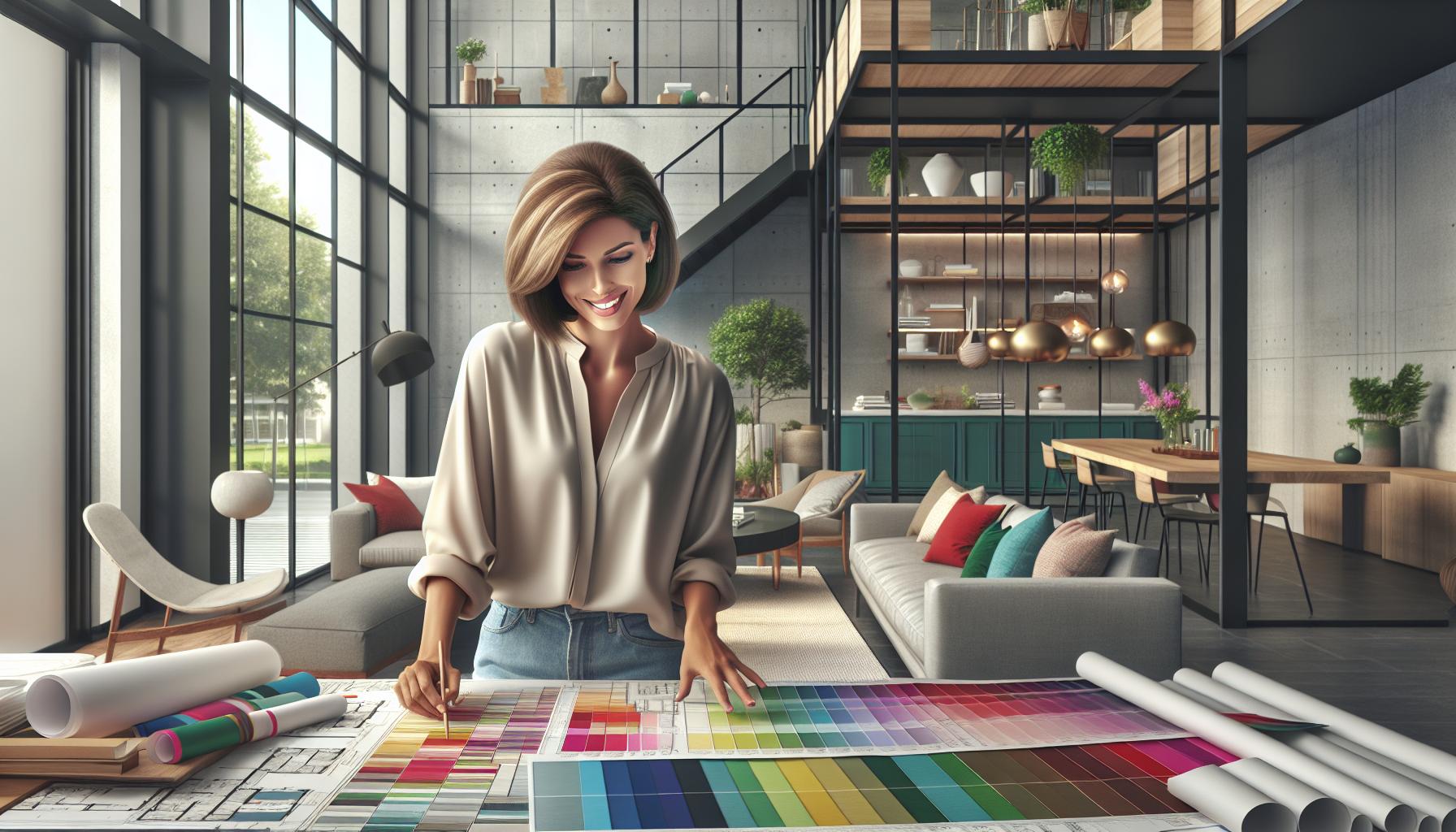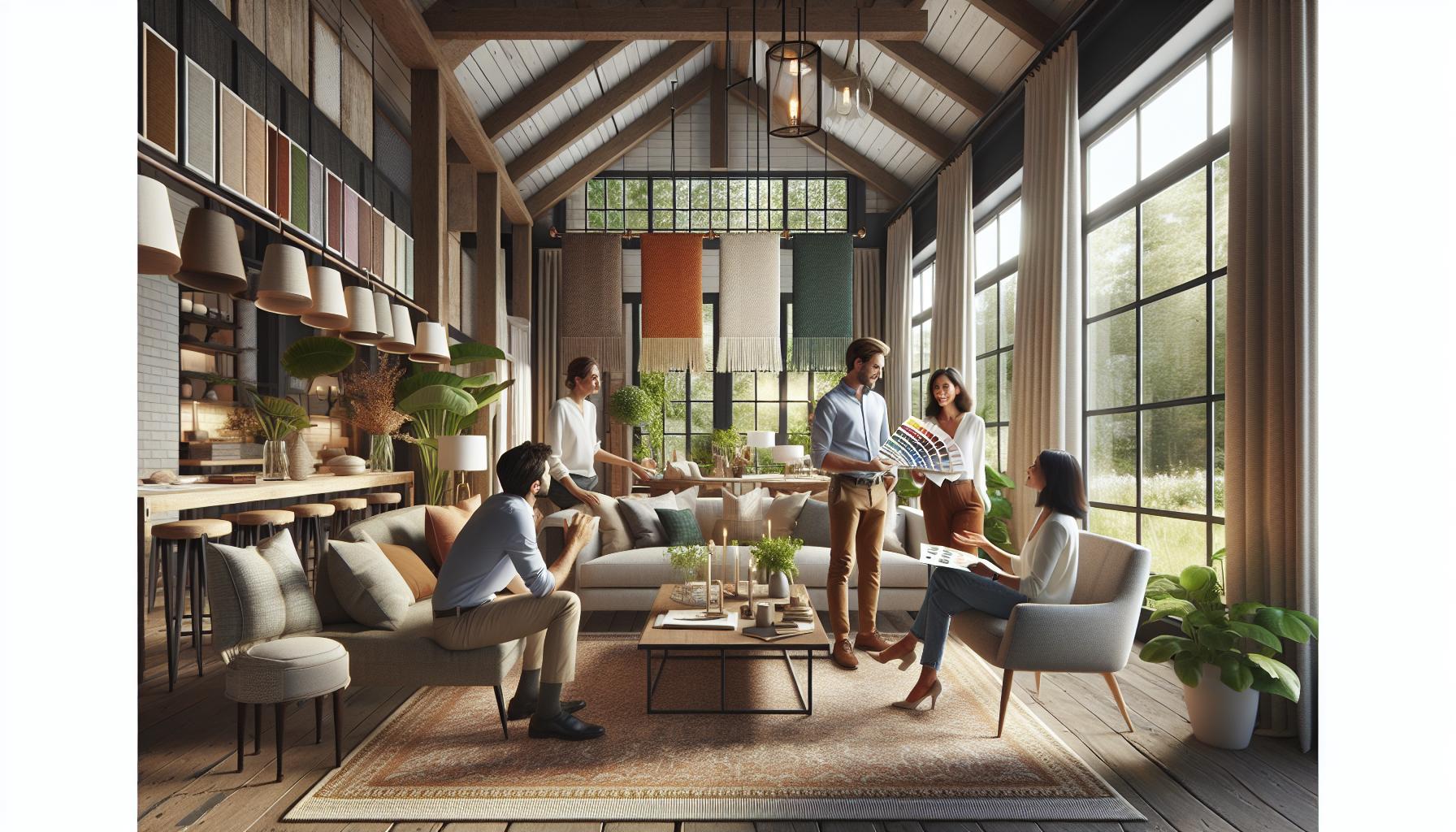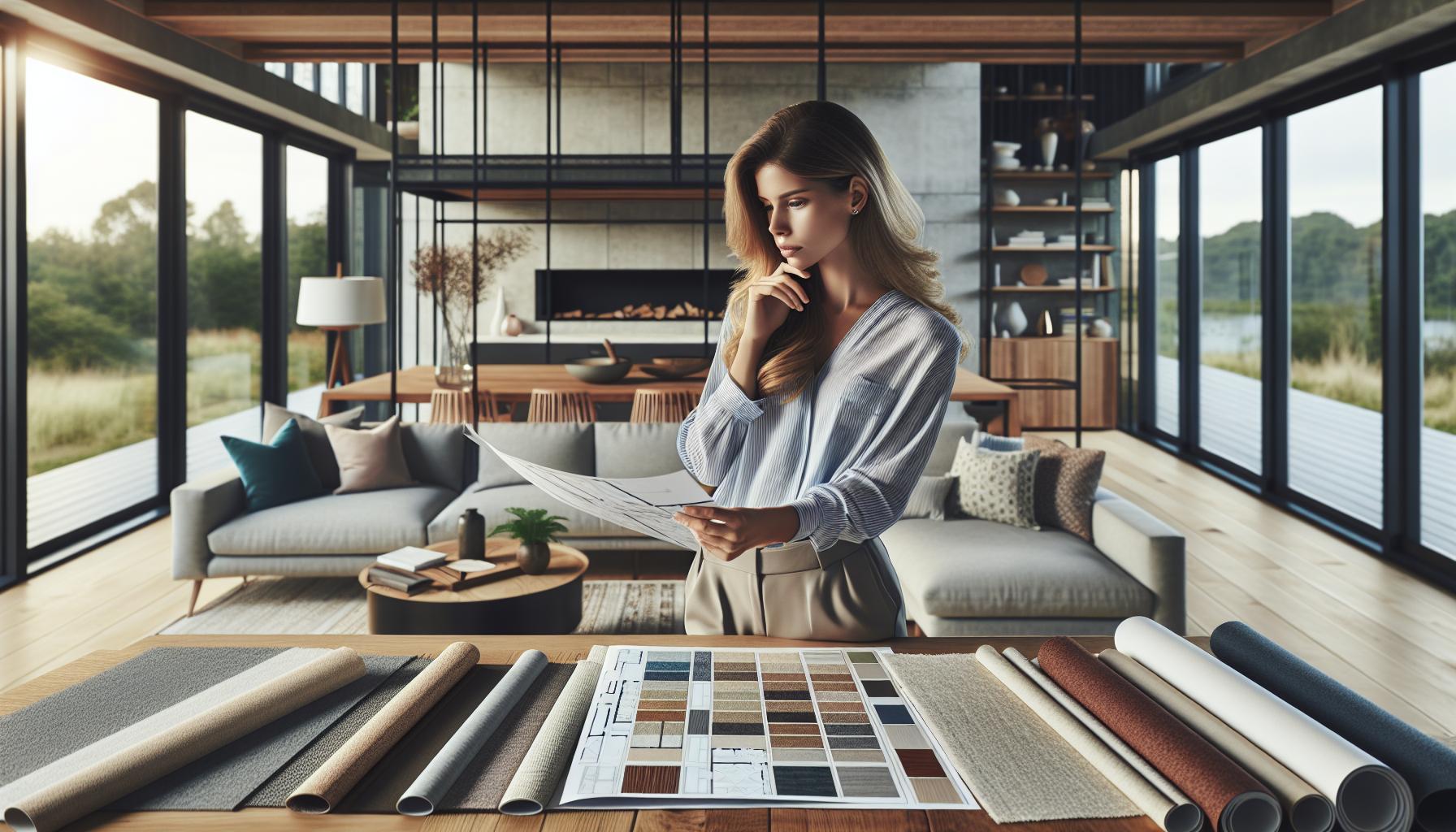Designing your own home is an exciting journey that allows you to bring your vision to life. It’s about creating a space that reflects your personality and meets your needs. Whether you’re starting from scratch or renovating an existing property, the process can be both thrilling and overwhelming.
Key Takeaways
- Assess Your Lifestyle: Reflect on daily routines, family dynamics, and personal hobbies to identify how you use and prioritize space in your home design.
- Identify Key Functional Areas: Design essential areas like living spaces, kitchens, bedrooms, and bathrooms to cater to your specific needs and enhance comfort.
- Create a Design Plan: Outline a clear layout that incorporates natural light and flow between spaces, while gathering inspiration and refining concepts through sketches or design software.
- Budget Effectively: Establish a comprehensive budget that covers all costs, including a contingency fund, prioritizing must-haves against nice-to-haves for informed decision-making.
- Choose a Suitable Design Style: Select a home design style that resonates with your identity, considering functionality and adaptability to match your evolving lifestyle needs.
- Collaborate with Professionals: Engage architects or interior designers to refine your vision and contractors for efficient execution, ensuring your design is both aesthetically pleasing and structurally sound.
How to Design Your Own Home
Designing a home involves careful consideration of my unique needs and preferences. It’s essential to assess my lifestyle and determine the key functional areas before diving into the design process.
Assessing Your Lifestyle
Assessing my lifestyle involves reflecting on daily routines, family dynamics, and personal hobbies. I evaluate how I use my space for activities such as cooking, entertaining, and relaxing. Understanding whether I prefer open-concept areas or defined rooms helps shape the layout. I consider the following:
- Daily Routines: Identify how I spend my time at home—whether I’m often cooking, working, or spending time with family.
- Family Size: Analyze the number of occupants and their specific needs, ensuring enough space for everyone.
- Hobbies and Interests: Account for special areas, such as a home office, gym, or craft room, tailored to my interests.
Identifying Key Functional Areas
Identifying key functional areas ensures my home design accommodates essential spaces. I prioritize areas based on lifestyle and activities:
- Living Area: Create a comfortable space for gathering, relaxing, and entertaining guests.
- Kitchen: Design an efficient kitchen layout, focusing on workflow and storage, to simplify meal preparation.
- Bedrooms: Plan bedrooms for privacy and restful environments, considering individual preferences for size and style.
- Bathrooms: Determine the number of bathrooms needed based on convenience and privacy for family members and guests.
These steps create a clear vision of my home design, aligning layout and spaces with my specific needs and desires.
Essential Steps in Designing Your Own Home

Designing your own home involves specific steps that streamline the process and ensure your vision comes to life. The right approach helps alleviate potential overwhelm during this exciting journey.
Creating a Design Plan
Creating a design plan starts with defining the layout. I prioritize spaces based on my needs, such as open floor plans for social gatherings or separate rooms for privacy. Sketching a rough floor plan assists in visualizing the arrangement of rooms. Using design software or apps can refine this concept further. I incorporate essential elements like natural light, ventilation, and flow between spaces, as these aspects impact comfort and functionality. Gathering inspiration from magazines, websites, or home tours fosters creativity and helps clarify my style preferences.
Budgeting for Your Home Design
Budgeting for home design requires careful consideration of costs. I first establish a overall budget to guide spending on materials, labor, and furnishings. Researching average prices for building materials, fixtures, and finishes ensures I make informed decisions. Allocating a contingency fund, typically 10-15% of total expenses, accounts for unexpected costs. I break down the budget into categories, including structural elements, electrical and plumbing work, and landscaping. Prioritizing must-have features versus nice-to-haves aids in making effective trade-offs while staying within budget.
Choosing a Design Style

Choosing a design style shapes your home’s overall aesthetic. It’s crucial to consider options that resonate with your tastes and complement your needs.
Popular Home Design Styles
- Modern: Emphasizes clean lines, minimalism, and open spaces. Characteristics include large windows and a neutral color palette.
- Traditional: Features classic furniture, rich colors, and ornate details. Often includes symmetrical layouts and decorative moldings.
- Contemporary: Represents current trends and may evolve over time. This style often blends elements from various design styles, focusing on simplicity.
- Industrial: Showcases raw materials like metal and wood. This style incorporates exposed beams, brick walls, and a neutral color scheme.
- Farmhouse: Blends rustic charm with simplicity. Key features include wooden accents, shiplap walls, and cozy, inviting spaces.
- Scandinavian: Known for functionality and simplicity. Common elements are light colors, natural materials, and a focus on comfort.
- Bohemian: Encourages a mix of colors, patterns, and textures. This style often embraces eclectic decor and a relaxed atmosphere.
- Reflect Your Personality: Choose elements that resonate with you, such as colors and textures. Use personal items, art, and collectibles to express your unique style.
- Consider Functionality: Align design choices with your lifestyle. Think about how you use each space and select furniture and layouts that enhance convenience.
- Embrace Flexibility: Opt for adaptable design elements that can evolve over time. Modular furniture and movable partitions can accommodate changing needs.
- Incorporate Cultural Influences: Integrate aspects of your cultural background into design choices. This may include specific patterns, colors, or architectural styles.
- Research Trends: Stay informed about home design trends to inspire your choices. Use platforms like Pinterest or design blogs to gather ideas and find your preferred aesthetic.
- Collaborate with Professionals: Work with architects or interior designers to refine your vision. Their expertise can ensure your design aligns with both functionality and aesthetics.
Key Elements of Home Design

Designing a home involves several critical elements that can significantly impact functionality and aesthetics. Focusing on space, flow, materials, and finishes ensures an effective design that meets personal needs.
Considering Space and Flow
Space and flow dictate how well a home functions. I assess room layouts to promote efficiency and connection. Prioritizing open concepts can enhance movement between areas, particularly in communal spaces like living rooms and kitchens. Think about traffic patterns; arrange furniture smartly to create clear pathways. Identify zones for various activities, ensuring family members can interact while also enjoying private spaces. Incorporating flexible areas, such as multi-purpose rooms, optimizes square footage and adapts to changing needs.
Selecting Materials and Finishes
Selecting materials and finishes impacts not only appearance but also durability. I consider functionality when choosing flooring, countertops, and cabinetry. For example, hardwood floors, while elegant, may require more maintenance compared to laminate or vinyl options. I explore sustainable materials like bamboo or recycled products for an eco-friendly approach. Finishes should align with the home’s design style—matte versus glossy, cool versus warm tones can drastically affect ambiance. Mixing textures adds depth; however, maintaining cohesion ensures a harmonious look throughout the space.
Working with Professionals
Working with professionals can elevate the home design process, ensuring my vision becomes a reality while addressing complex challenges. Engaging skilled individuals at the right stages can save time, enhance aesthetics, and promote structural integrity.
When to Hire an Architect or Designer
Hiring an architect or designer proves beneficial in several scenarios. When undertaking significant renovations or building from scratch, these professionals bring invaluable expertise to the project. They help refine concepts, develop detailed plans, and navigate local building codes. When I’m unsure about design aesthetics or functionality, their insights can clarify my vision and ensure efficient use of space. Professionals also assist in creating a cohesive style that reflects my personality while addressing practical requirements like safety and accessibility.
Collaborating with Contractors
Collaborating with contractors streamlines the construction process, turning design ideas into tangible results. Choosing reputable contractors ensures adherence to project timelines and budgets. When I communicate my needs clearly and provide detailed design plans, I facilitate smoother interactions. Regular check-ins during the construction phase allow for timely adjustments, fostering a productive relationship. It’s essential to establish a contract that outlines project scope, timelines, and payment schedules to avoid misunderstandings and keep the project on track.
Designing Your Own Home is a Rewarding Adventure
Designing your own home is a rewarding adventure that allows you to express your individuality while creating a functional space. Embracing the process means considering your lifestyle and needs to develop a thoughtful layout.
I’ve found that gathering inspiration and staying organized with a clear budget can make a significant difference. Collaborating with professionals when necessary can elevate your vision and ensure a seamless execution.
Ultimately, this journey is about crafting a sanctuary that reflects who you are and enhances your everyday life. Enjoy every step as you bring your dream home to life.
